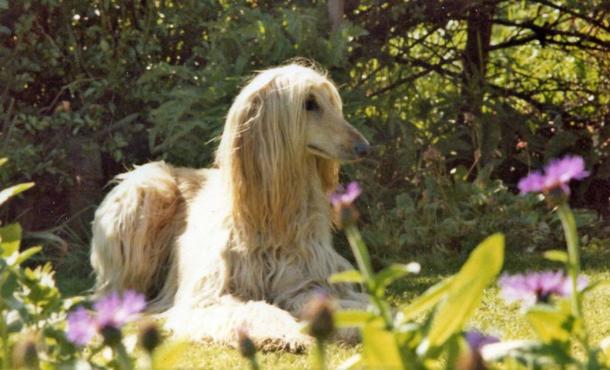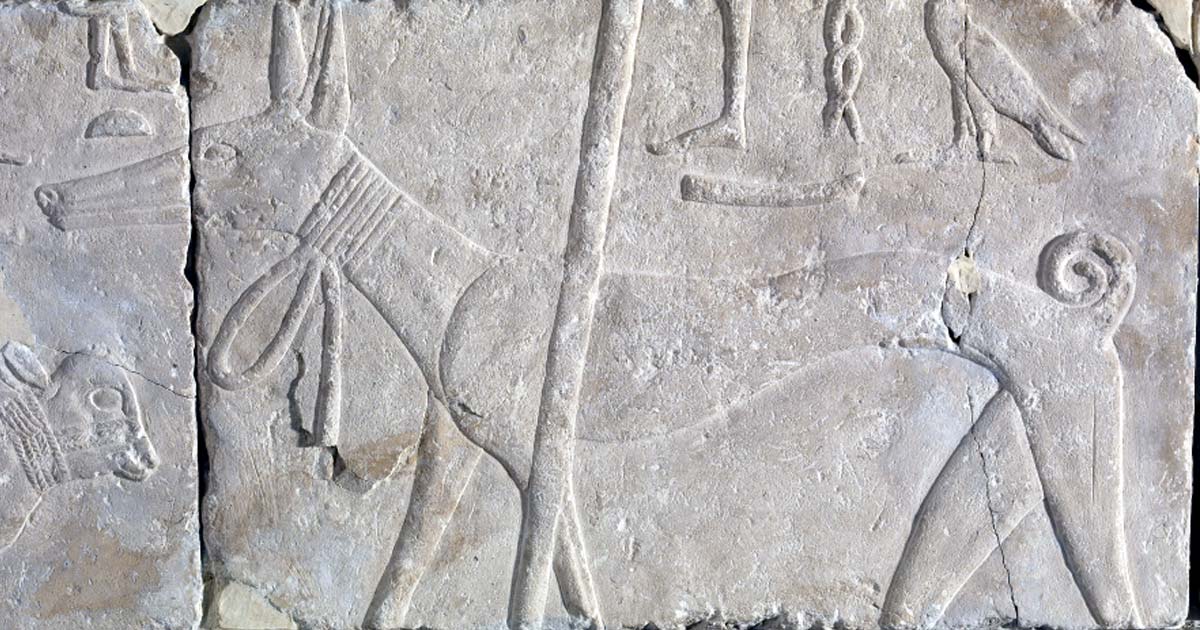Dogs, Ancient and Modern: A Mythological History
Dogs have been with us since the first stargazer cast an eye to the heavens. Were dogs up there, too -- in the stars?
The answer is yes.
In ancient times the dog star guided and guarded, just as its counterpart, dog, did on earth. Inseparable from people, in caves and in castles, dogs have watched, warned, sported, lazed, lounged, and loved human beings more than any other earthly animal.
The indispensable dog probably made his earliest appearance as far back 6,000 years ago in Africa. However, some mythologists argue that the human-canine partnership started with the Afghan whose wet nose plugged up the holes in the Ark so it wouldn't sink.

According to mythology, the Afghan (pictured) plugged up Noah’s Ark with his nose (public domain)
Our dog heroes include the one who first brought fire to humankind. This dog's mythical name was Rukuba, guardian of fire. The story goes that on the first morning of the world, no one knew what gods ruled the earth. They only knew that they were part of everything, and everything was part of them.
So in this world of wonders, a man named Nkhango went out exploring and the first thing he saw was something that sparkled. In front of it was a four-footed person with long ears. "What strangeness is this?" Nkhango asked.
"I am Rukuba, guardian of fire, but I am also called Dog."
Nkhango saw that the sparkly thing was hungry and that it clamored for food. Rukuba got up from where he sat and reaching into a pile of dry sticks, fed the thing. It ate quickly and grew brighter.
Nkhango asked Rukuba, "What is the thing you are feeding?"
"Fire," Rukuba answered.
And so began, African storytellers say, the earliest friendship between man and dog. However, in the passage of time, the two became inseparable. Such heroes as "The Creation Dog" (perhaps an ancestor of the Basenji) were famed for leaping up above the grassy African plain and helping people in their pursuit of game.
Yet dogs were not, even in the beginning, so trustworthy. Some were tricksters, and they became known for tricking people. This so-called Trickster Dog had many guises. There was the dog named Wolf who accidentally brought Death into the world.

Some dogs were tricksters and became known for tricking people (public domain)
Eskimo storytellers say that Dog was created by Raven and Raven's wife. Raven was asked by his wife to make something useful. So Raven, while thinking hard about what to make, grew very long fingernails. These he turned into something with four legs, a long nose, and a curly tail. Thus Dog came into being as a result of Raven's talent, trickery and moodiness -- all things that the Trickster Dog inherited.
In time, as humans and dogs became accustomed to one another's ways, many other archetypes appeared. One of the most curious of canines in myth and legend is the "Dogge of Changes" or simply, Metamorphosis Dog. In terms of breed, this was the 17th century hunting dog who, in fact if not myth, was impervious to water, cold water, that is, and a great swimmer whose fur gave off little or no scent. Thus, the Poodle!
The poodle's French name was originally chien canne meaning "duck dog." The word poodle comes from the German pudeln which means "to splash about in the water." This is something the breed is still known for. The poodle's fur is water tight and especially thick at the joints.
The earliest poodle hero is called Boye, the name given to the dog that won battles in the English Civil War of 1642. It was said that this famous canine belonged to Prince Rupert. The dog was described as a metamorphosis dog, a mystical dog of changes.

Boye, accompanying Prince Rupert of the Rhine (public domain)
Boye could speak four languages and he change his shape in order to spy on enemies. He was known to change himself into Philip the Shoemaker, Tom the Barber and Bill the Bookbinder. As a shapeshifter, Boye could pick up gossip, secrets of state, and in a battle he could catch bullets in his teeth and save them for Prince Rupert. He was able to swallow enemy bullets and defecate them, so they could be reused. During the battle of Marston Moor, Boye was killed by a magician who fired a magic bullet made of silver. Boye, vanished but only to reappear as a silver cloud in the sky.
Certain historical and mythical dogs are known for their courage, patience, cunning and faith. They are not known for magical qualities but rather spiritual ones. Sometimes referred to as Guardian Dogs, they are more commonly called Watchdogs. In Christian mythology one of the oldest of oral stories is that of "The Seven Sleepers." The story dates back to A.D. 750 and tells of seven youths near the city of Ephesus, which is near the coast of Asia Minor. This story is related to the Arabic epigram that says, "A greedy person is one who would not throw a bone to the dog of the seven sleepers."

The Seven Sleepers were guarded by a Watchdog (public domain)
The watchdog of the seven was thought to be a Saluki. It guarded seven teenagers who were fleeing for their lives during the realm of Emperor Decius sometime around A.D. 250. The Koran tells of the youths' long uninterrupted sleep -- 309 years -- during which time they were constantly watched over by the great Saluki guard dog whose four legs stretched across the mouth of the cave where the boys slept. It is said that the dog spoke to the boys in a prophetic voice saying that he loved those who also loved God or Allah, and that he would watch over them.
This famous story earned the Saluki the right to enter paradise. One interpretation states that the story of the seven sleepers harkens back to ancient Egypt and the dog so named is an emissary between the worlds of life and death, a reference to Anubis.
Another great historical/mythical dog guardian is Gelert. Again, with this story, there is a proverb: "To repent as deeply as the man who killed his dog." The Welsh phrase comes from a 13th century folktale which tells of Prince Llewelyn's favorite wolfhound, Gelert. One day the prince was hunting and he noticed that Gelert was not at his side. Returning home, the prince was greeted at the door by his wolfhound who had a blood-red mouth. Inside, the prince saw his son's cradle overturned, and the house in total disarray.
Thinking his dog had killed his son, Llewelyn drew his sword and slew Gelert. Then he heard an infant cry from under the cradle. At the same time, he caught sight of a dead wolf in the corner of the hall.

Gelert watching over the infant (public domain)
Grief-stricken, Llewelyn built a stately tomb for his brave dog. And so it was that the village Beddgelert, which means Gelert's Grave, received both a name and a saying; one that has survived through the ages.
It is really impossible to say exactly when dogs and humans first made contact. But in the words of the former Vice President of The Humane Society, Dr. Michael W. Fox, "Indeed the nature of the dog is such that it would not be an overstatement to say that the dog helped civilize the human species." And it is to the dog's credit, that we have been inspired to preserve their stories, myths and histories so that future generations would profit by them.
Top image: Old Kingdom Egyptian relief depicting a dog, c. 2400 BC (public domain)

















